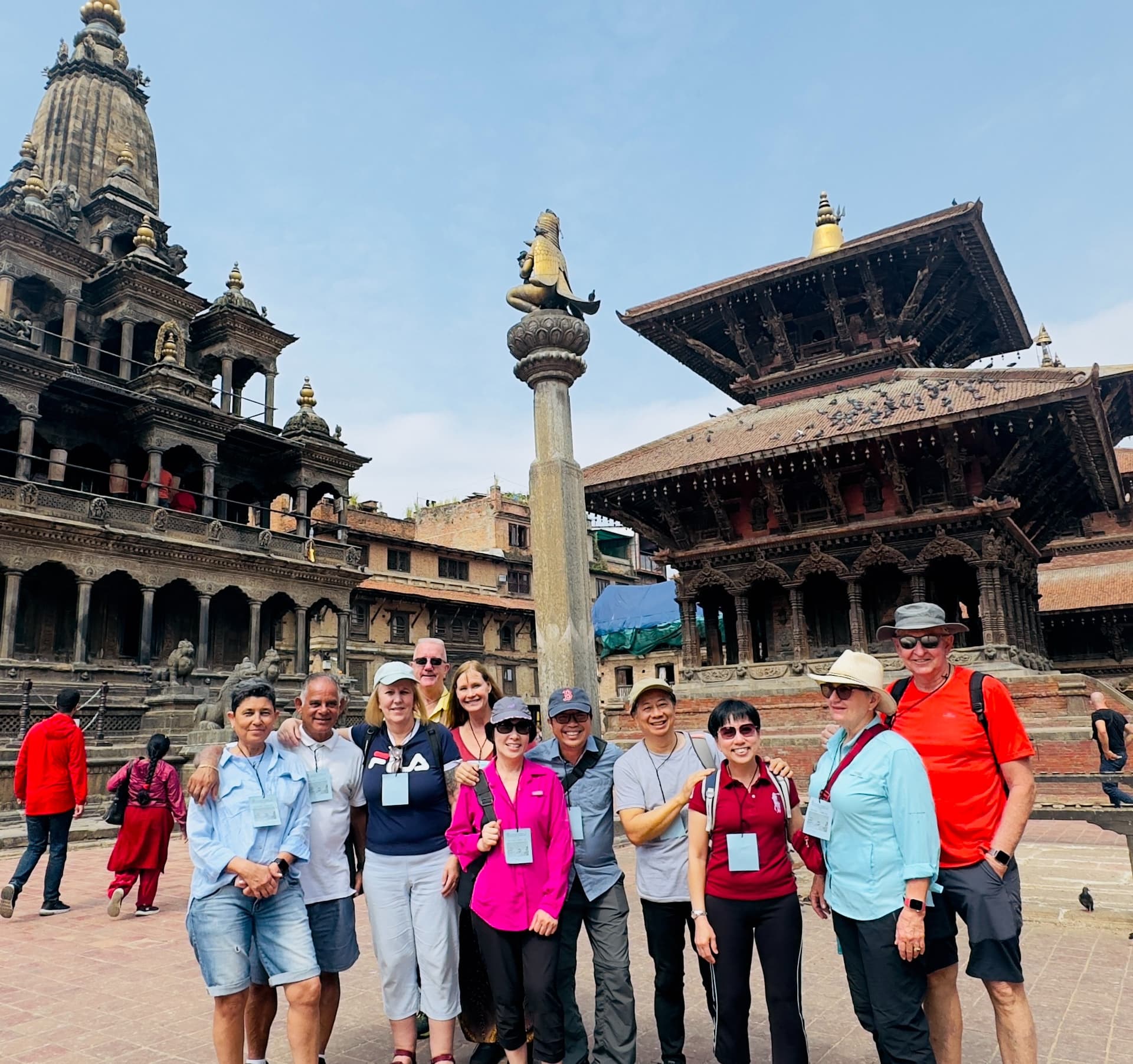Embark on the Luxury Everest Escape: Helicopter Adventure & Kathmandu Valley Retreat, an exclusive journey that seamlessly combines adventure, culture, and opulence. Begin your expedition with a breathtaking helicopter tour to Everest Base Camp, offering unparalleled views of the world’s highest peaks. Witness the grandeur of Mount Everest and the Khumbu region from above, with a landing at the iconic Everest View Hotel for a delightful breakfast surrounded by Himalayan splendor. This once-in-a-lifetime adventure ensures a front-row seat to Nepal’s natural majesty while offering unmatched comfort and luxury.
(For Group rates and discounts please contact us at - Direct Call: +977-9851005129 (Nepal) and +1 916 794 8443 (USA) / Whatsapp: +977-9851005129 )
Continue your journey with a guided exploration of Kathmandu Valley, where ancient heritage sites like Swayambhunath, Boudhanath, and Pashupatinath reveal Nepal’s rich cultural tapestry. Retreat to the serene hill station of Nagarkot, renowned for its spectacular sunrise views over the Himalayas. Stay in handpicked luxury accommodations, whether boutique 4-star hotels or lavish 5-star resorts, designed to elevate your experience. From personalized services to a traditional farewell dinner with cultural performances, every detail of this tour, curated by Luxury Holidays Nepal, is crafted to deliver an unforgettable and indulgent escape.
Major Highlights of Luxury Everest Escape: Helicopter Adventure & Kathmandu Valley Retreat
- Everest Helicopter Tour with Landing: Fly over the breathtaking Himalayas, including Everest Base Camp and Kala Patthar. Enjoy a scenic breakfast at the world-renowned Everest View Hotel in Syangboche. Experience unparalleled views of Mount Everest and the Khumbu region.
- Luxury Accommodations: Stay in carefully selected luxury hotels and resorts, such as The Dwarika’s Hotel, Marriott Kathmandu, or Kavya Resort in Nagarkot. Enjoy world-class hospitality and amenities throughout your journey.
- Guided Exploration of Kathmandu Valley: Discover UNESCO World Heritage Sites like Swayambhunath (Monkey Temple), Pashupatinath Temple, Boudhanath Stupa, and Kathmandu Durbar Square. Immerse yourself in the rich cultural and historical legacy of Nepal.
- Nagarkot Sunrise Retreat: Witness an awe-inspiring sunrise over the Himalayan range from the tranquil hill station of Nagarkot. Revel in the serene environment and spectacular panoramic views.
- Seamless Transfers and Comfort: Private luxury vehicles for all airport transfers and sightseeing activities. Professional and attentive service throughout the tour, ensuring a hassle-free experience.
- Traditional Nepali Farewell Dinner: End your journey with an authentic Nepali dinner in a cultural setting, complete with live traditional dance performances. This exclusive package blends adventure, culture, and luxury for an unforgettable journey through Nepal's most iconic destinations.
Route Overview
The Luxury Everest Escape: Helicopter Adventure & Kathmandu Valley Retreat takes you on an extraordinary journey through Nepal’s most iconic destinations, blending adventure, culture, and serenity. Starting in Kathmandu, you’ll embark on a thrilling helicopter tour to Everest Base Camp. Fly over the stunning Khumbu region, with unparalleled views of the snow-capped Himalayas, including Mount Everest. Experience a scenic landing at Syangboche Hill, where you’ll savor breakfast at the world-famous Everest View Hotel, surrounded by towering peaks. The helicopter tour offers the ultimate luxury of seeing the world's highest mountain in just a few hours, combining excitement and exclusivity.
After your aerial adventure, immerse yourself in the cultural wonders of Kathmandu Valley with a guided tour of its UNESCO World Heritage Sites. Marvel at ancient temples, bustling markets, and sacred stupas that showcase Nepal’s vibrant history. Conclude your journey with a retreat to Nagarkot, a serene hill station known for its panoramic Himalayan views. Here, you’ll witness a breathtaking sunrise over the mountains, creating the perfect end to your luxurious escape. With premium accommodations and seamless logistics throughout, this route offers an unmatched blend of Nepal’s natural and cultural treasures.





























